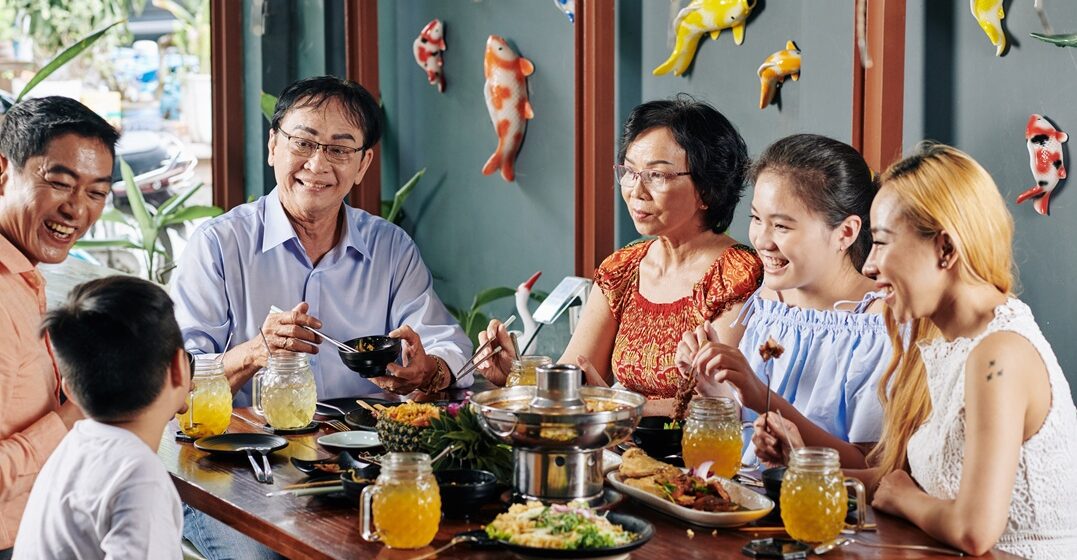Lost and found: Gen Z’s revival of heritage languages

In an age of global migration and digital connection, Gen Z is emerging as an unexpected but powerful force in the revival of heritage languages—those spoken at home but not by society at large.
Across social media, young digital natives are reclaiming the languages of their ancestors, reshaping what it means to belong, and sparking a linguistic renaissance.
Transnational migration has steadily increased throughout the decades, particularly to the United States. In 2023, the U.S. foreign-born population saw the largest growth in over 20 years, reaching 47.8 million people.
As immigrant communities adapt, some lose touch with the language from their family’s country of origin. Over generations, fluency may become reserved for family only or completely fade.
However, digital natives from Gen Z are recognizing the value of preserving their family’s heritage languages.
So,why are these languages lost in the first place? And what factors are fueling this revival?
Note: While heritage language revival is a global phenomenon, this article focuses specifically on communities in the United States.
- The Gen Z language revival: More than a trend
- Spotlight: Languages making a comeback
- Why are we losing these languages?
- What’s fueling the reconnection?
The Gen Z language revival: More than a trend
The United States, widely recognized for its diversity due to a long history of immigration, is home to approximately 400 languages. Yet, despite this landscape, English has remained the dominant language—spoken exclusively in over 75% of U.S. households. It wasn’t until early 2025, though, that English was formally declared the official language of the country (seen by some as an oppressive policy).
Language is an important part of cultural identity for immigrants and their offspring. In fact, research shows that losing a language can undermine one’s sense of belonging. Heritage languages remain a medium through which we carry important history, values and traditions.
Against this backdrop, younger generations like Millennials and Gen Z are leading a quiet but impactful revolution: reconnecting with the languages their families once left behind (like Tagalog, Vietnamese, Spanish, Korean and indigenous languages like Navajo).
Spotlight: Languages making a comeback
Some of the languages young generations in the US are working to preserve include:
- Tagalog: An estimated 4 million Filipinos live in the U.S., with more Filipino-Americans being U.S.-born than immigrants. Some young Filipino-Americans report feeling disconnected from their heritage, as exposure to Tagalog is often limited to the home, if at all.. In response, younger generations are reclaiming their roots by joining student organizations that celebrate Filipino pride and promote the learning of Tagalog, history and traditions.
- Vietnamese: After the fall of Saigon in the mid-70s, thousands of Vietnamese refugees resettled around the world, with many making the U.S. their new home. Over time, a language breach between older and younger generations emerged. This disconnect can hinder intergenerational communication and the healing of intergenerational trauma. In response, young Vietnamese-Americans are actively working to close that gap The growing presence of Vietnamese language programs in high schools and initiatives like Stories of Vietnam, which distributes children’s books to encourage cultural knowledge, reflect this vibrant change
- Yoruba: The West African language of Yorubafaces a similar challenge of generational disconnect. Preserving it is essential to conserving a heritage rich in traditions, art and spiritual wisdom. Efforts to keep Yoruba culture alive include language programs at cultural centers, festivals and learning tools like Yoruba Flashcards.

Why are we losing these languages?
Statistically, heritage languages disappear by the third generation. Here are some of the most significant factors driving this loss:
- Pressure to assimilate: Historically, immigrant and Native American families prioritized their children learning the majority language to avoid discrimination. This pressure is especially strong if the history between their origin and destination countries has been marked by conflict or tensions. Many parents also believe that English fluency offers their children a greater chance of integrating into mainstream society and accessing better opportunities.
- Suppression and colonial influence: Language loss is not always voluntary. During U.S. rule in the Philippines, English was imposed as the medium of instruction. Similarly, African languages were brutally suppressed during the transatlantic slave trade, and indigenous languages in Native American communities have faced systemic oppression. Today, heritage languages in the U.S. are still sometimes viewed as impractical and U.S. education policy often fails to support or celebrate multilingualism.
- Generational decisions: Practicality also plays a role. Parents may choose not to pass their heritage language on due to demanding work schedules, lack of resources or a desire for their children to navigate the school system smoothly.
The roadblocks: It’s not always easy
Despite growing interest, the path to reviving heritage languages isn't without its challenges. Individual drivers, like the fear of making grammar or pronunciation mistakes can also contribute to the loss of language abilities in a family. For second- and third-generation individuals, this can manifest as linguistic imposter syndrome: the feeling of not being “enough” to claim their own cultural identity. who
Travel to visit family and study abroad opportunities can provide an immersion experience, but they require a financial commitment.
What’s fueling the reconnection?
Here are some key elements that are fueling younger generations’ interest in reconnecting with their heritage languages:
Social media as a catalyst
For Gen Z and Millennials social media (particularly Instagram, YouTube and TikTok) has become a powerful language-learning space. As content creators and social media users seek to build a defining identity in the digital age, they turn to their ancestors’ roots to foster a sense of connection, community and pride. They use reels, challenges and vlogs to share their learning journeys, jokes about assimilation or even short language lessons.
Digital tools make it possible
Today’s access to mobile language-learning apps like Duolingo makes it easier for students to practice at their own convenience. And online communities like Discord and Reddit help those interested in learning more about their heritage connect, share advice and encouragement from people on similar journeys..
The power of authenticity and belonging
Reconnecting with a heritage language enables younger generations to strengthen their relationships with elders and the broader community. Linguistic knowledge can deepen someone’s understanding of history and traditions and, for many, express pride and perseverance of culture.
Once a functional level of fluency is achieved, the ability to consume media in a heritage language is a major way to foster connection.
Celebrating diversity
Unlike previous generations in the U.S. who felt intense pressure to assimilate into mainstream Eurocentric U.S. culture, today’s youth are leaning in—reclaiming identity through language. Younger generations with immigrant backgrounds are seeking to reconnect with their home languages more than ever. Gen Z is reminding us that language is living culture—and it’s worth preserving. . This generational shift doesn’t just revive words—it revitalizes stories, strengthens communities, and redefines what it means to be American in a globalized world.

Begin your personal language journey
- Courses tailored to your learning needs
- Qualified teachers, small class sizes
- Expert-designed curriculum
- Live classes with native-level teachers















